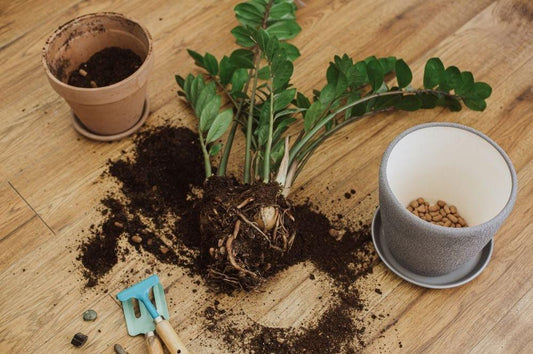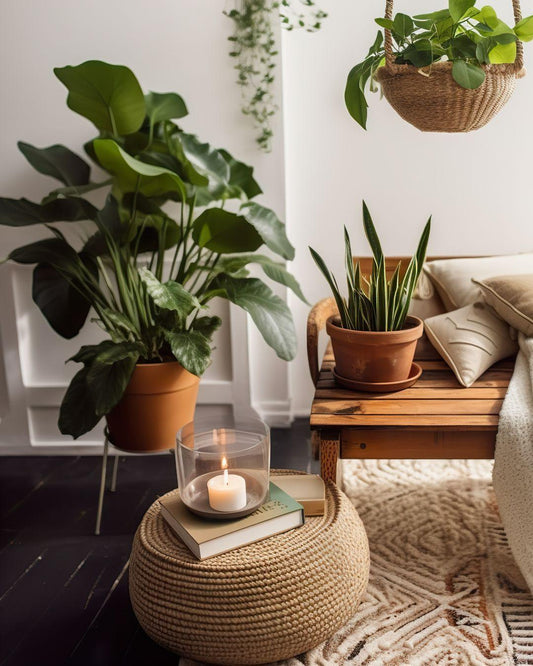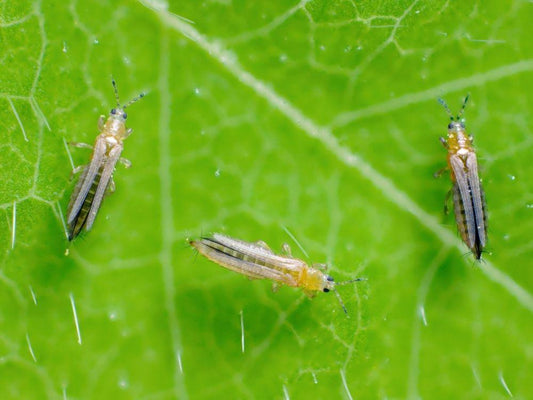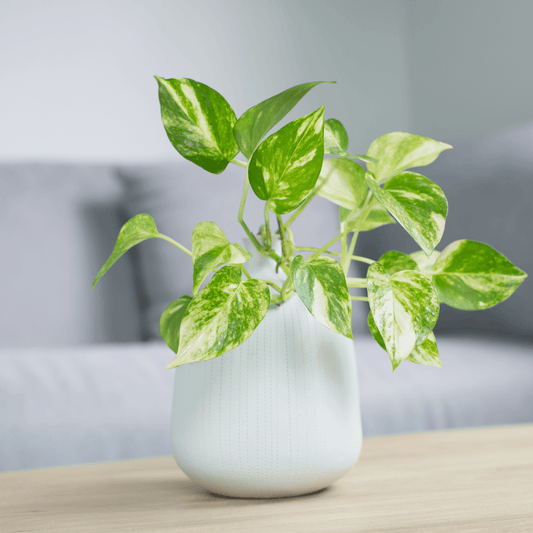Welcome to the Viola Plants blog! Today we will be talking about how to care for tropical houseplants, with a special focus on three effective methods to provide humidity to your plants.
Whether you are growing indoor plants in general or tropical plants specifically, these tips will help you keep your plants thriving and healthy.
If you are a lover of tropical plants or want to give one to someone you know will appreciate it very much, in my shop you can discover the variety of tropical plants that I produce myself!
Why provide humidity to houseplants?

First of all, it is important and useful to clarify, for those who do not know, why you should increase the humidity in the air for your plants and under what circumstances.
Tropical plants, in particular, belong to countries with tropical or subtropical climates (e.g. countries in South America, Africa, Asia, Australia, etc.). Their original habitat is often characterized by a high level of environmental humidity also due to frequent rainfall, but accompanied by warm and constant temperatures all year round. Rainforests, for example, have humidity levels that can exceed 90%, creating an ideal environment for the growth of tropical plants.
In Italy, the climate conditions are very different. During the winter, indoor humidity can drop significantly due to home heating, while in the summer, air conditioning can further reduce humidity. In fact, as I think everyone knows, tropical plants in Italy, as in all other continental countries (therefore not tropical), should be grown indoors because they can offer them a habitat more similar to the original one present in nature - that is, without sudden changes in temperature, with a more or less constant gradation throughout the year, protected from strong weather and especially from the sun's rays.
On average, humidity in Italy varies between 50% and 70% during the winter and between 40% and 60% during the summer. These levels can be insufficient for tropical plants, causing problems such as yellowing leaves, dry edges and slow growth. Increasing the humidity around your houseplants can therefore help keep leaves green and healthy, promote vigorous growth and prevent damage caused by excessively dry air.
In winter
In a home environment, especially during the winter months when the heating is on, the air tends to become very dry. This can cause stress to tropical plants, leading to problems such as yellowing leaves, dry edges, and slow growth.
The basic rule is definitely to keep plants away (this applies to all plants, not just tropical ones) from radiators or other heat sources. Too close would also cause the drying and death of any plant. Another remedy and necessity for tropical plants is to keep them away from direct sunlight, including those that pass through windows.
In the summer
Even in summer, tropical plants that we keep indoors can suffer from insufficient humidity. Air conditioning, used to keep the house cool, tends to reduce the humidity inside, creating an environment that is too dry for these plants.
In addition, rising temperatures can quickly evaporate moisture from the soil and surrounding air. Maintaining adequate humidity during the summer helps prevent plants from drying out, promotes healthy, lush growth, and prevents damage to leaves and roots.
I remember that in summer, in Italy and other places with a Mediterranean climate, it is possible to keep tropical plants outside, as long as they are in the shade and protected from direct sunlight. I personally don't do it because the Italian climate, especially in recent years, is increasingly "crazy": there are often sudden storms, even violent ones, and significant temperature changes, things that tropical plants hate and do not suffer in their original habitat.
If you are lucky enough to live in subtropical or tropical areas, you are obviously also in the natural environment of your plants, those that in the rest of the world we have to keep indoors. At that point you can also opt for growing them outdoors in the open ground!
Here are 3 ways to increase the humidity of your tropical plants.
1. Expanded clay pebbles and water in the saucer

A simple and effective method to increase humidity around your indoor tropical plants is to use expanded clay pebbles and water in the saucer. This method works by creating a humid microclimate around the plant without directly wetting the roots.
On my Instagram profile you can see a detailed video about this method: click here to watch it or click directly on the play button below!
How to do:
- Fill the saucer with a layer of expanded clay pebbles.
- Add water until half of the pebbles are covered.
- Place the plant on the saucer, making sure that the bottom of the pot does not directly touch the water.
Ideal plants:
- Orchids
- Ferns
- Calathea spp.
- Palms such as Chamaedorea Elegans, Kentia, Areca (or Dypsis Lutescens)
- Dracaena
- Monstera
Precautions:
Be sure to check the water level regularly and never leave the plant's roots in direct contact with water to avoid root rot.
2. Spray water on the foliage

Misting foliage with non-calcareous water is a simple but very effective way to increase humidity for tropical houseplants. This technique mimics the humid environment and fine rain of tropical forests, where these plants grow naturally.
How to do:
- Fill a vaporizer with non-calcic water* .
- Mist the foliage of your plants once or twice a day, preferably in the morning.
* Clarifications on the water to use:
Distilled or demineralized water : These types of water are free of minerals, including calcium and magnesium. They are ideal for preventing limescale deposits on plant leaves. They can be purchased in cans at the supermarket or recycled from the collection tray of an air dehumidifier.
Rainwater : Rainwater is naturally limescale-free and can be a great option for misting your plants.
Tap water with a softener : if you have a softener installed on your tap, the water will be softer and have less limescale.
Regular tap water decanted : "Decanting" means allowing the water to sit for a period of time, usually a few hours, so that the limescale can settle to the bottom of the container. This method does not completely remove limescale from the water, but it can reduce its concentration.
Ideal plants:
- Ficus
- Maranta
- Philodendron
- Monstera
- Calathea
- Palm trees
- In general it is good for all plants both tropical and non-tropical when they are indoors, since they are not in nature and do not have rain. Avoid it during flowering periods (for flowering plants) to avoid ruining the flowers.
Precautions:
Avoid misting too close to windows during the winter months, as the water may freeze on the leaves. Don't over-mist to avoid mold problems.
3. Use a room humidifier

Using a room humidifier is an efficient and convenient method of maintaining proper humidity in an entire room, benefiting all the houseplants present, and even people when the air in the house is too dry.
How to do:
- Place the humidifier in the room where you have your tropical plants. If possible, the best and most convenient thing is to group all the tropical plants in one area (unless you want to have more than one humidifier). They come in various sizes, obviously use one that is proportionate to the plants you want to treat. Know that it can also be useful to you in winter when the air dries out due to heating and also when you have a cold or flu!
- Adjust the humidifier to maintain a humidity level between 50% and 60%.
- Be sure to clean your humidifier regularly to prevent the growth of bacteria and mold.

Ideal Plants:
- Spathiphyllum
- Dieffenbachia
- Alocasia
- Monstera
- Indoor Palms
- Calathea
Precautions:
Do not place the humidifier too close to the plants to avoid excessive humidity that could damage the leaves. Monitor the humidity of the room with a hygrometer to maintain optimal levels.
Attention: Bonus method!

If you've read this far, first of all, thank you and congratulate you for your interest. You deserve to know a fourth method to use occasionally, that you don't expect... that of taking plants with you to the bathroom!
If you've never heard of it, I'll tell you! When you shower or bathe, all the tropical plants (all those that you can move comfortably) you can take with you to have a nice steam bath. This method is optional but for orchids it is almost essential!

You can also take advantage of it by putting the plants in the shower and washing them! Yes, because they do not have the natural rain that washes them like in nature, houseplants need to be dusted and cleaned, especially their leaves. This operation should be done at least once a month or whenever you notice dust on the leaves.
This allows your plants to photosynthesise properly and to be able to "breathe" through their leaves, which would otherwise be clogged by dust, also leading to poor plant health.
If you go to my Instagram profile @violaplantscom I have inserted some videos on the "plant shower".
Conclusion
Maintaining the ideal humidity for tropical houseplants is not difficult if you know the right tricks. Using expanded clay pebbles and water in the saucer, regularly misting the foliage, and using a room humidifier, your houseplants will thrive and bring a touch of exotic greenery into your home.
Always remember to monitor humidity and not to overdo it, as too much humidity can be harmful to both plants and the home environment. Good care of your plants and see you next time on the Viola Plants blog!
Discover in my shop the variety of tropical plants that I produce!





